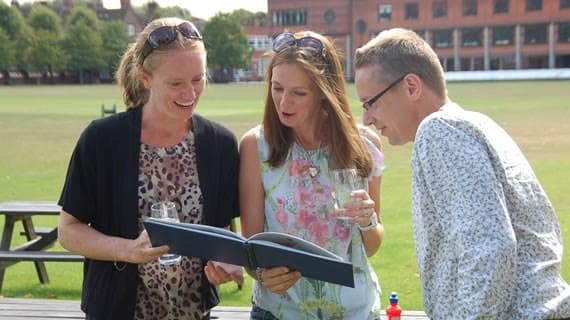Six Hundred Years of Ipswich School
The first hard evidence of the School’s existence, an unpaid bill, dates from 1399 but it is likely that the School had been functioning for some years before then. Originally it served the needs of the members of the religious Guild of Corpus Christi, providing an education for their children, probably between the ages of 7 and 12. The first master also acted as chantry priest in the Guild Chapel in St Mary le Tower Church where lessons may have been held.
Richard Felaw, a merchant and Portman (Alderman) of Ipswich, bequeathed his house in what is now Foundation Street to the School, endowing it with lands so that children of needy parents could attend without paying fees. These new premises made it possible for the School to take boarders, which it has continued to do to this day.
One of the first pupils to benefit from Felaw’s endowment was Thomas Wolsey, later Cardinal Archbishop of York and Lord Chancellor of England. In 1528, when at the height of his power, he created the Cardinal’s College of Mary in Ipswich, incorporating the School in the foundation. He envisaged an institution of the same splendour as Eton or Winchester, but the college was only half built when he fell from power in 1530. The endowments were forfeited to the King and only one of the gateways of the college now survives, next to St Peter’s Church in the dock area.
Thomas Cromwell ensured the survival of the School by securing for it a new endowment from King Henry VIII and the status of a royal foundation. This was confirmed by Queen Elizabeth I in the charter that she granted to the School in 1566. For part of the School’s history it was known as Queen Elizabeth’s Grammar School, Ipswich. The School’s coat of arms and motto, Semper Eadem (Always the Same), are those of Elizabeth I. Her Majesty Queen Elizabeth II is the School’s Visitor.
During the reign of James I part of the Blackfriars Monastery was appropriated for use as a classroom, and the Blackfriars remained the School’s home until 1842 when the building was deemed to be unsafe. For a few years teaching was carried on in temporary premises in Lower Brook Street. In 1851 Prince Albert laid the foundation stone for the School’s first purpose-built premises in Henley Road, and by 1852 the new buildings were in use. The School has remained on the Henley Road site ever since.
For much of its history the School has been closely connected with the Borough but after the Second World War the Governors took the decision that it should become fully independent. The first girl pupil was admitted in 1977 and the school is now fully co-educational.
As well as Cardinal Wolsey, the School can claim a number of distinguished former pupils. Eminent men of action include Thomas Howard, Duke of Norfolk, the English commander at the battle of Flodden, and Rear Admiral Sir Philip Broke, who captained HMS Shannon in a celebrated engagement with the USS Chesapeake. The novelist Henry Rider Haggard was a pupil here in the 1870’s and distinguished artists such as Sir Edward Poynter, President of the Royal Academy, Charles Keene of Punch, and Edward Ardizzone attended the School. In the field of Science, the pioneering neurophysiologist and Nobel Prize-winner Sir Charles Sherrington is the most distinguished old Ipswichian to date.
A School with a distinguished history and a thoroughly modern approach to education in the last decade of the Twentieth Century.

